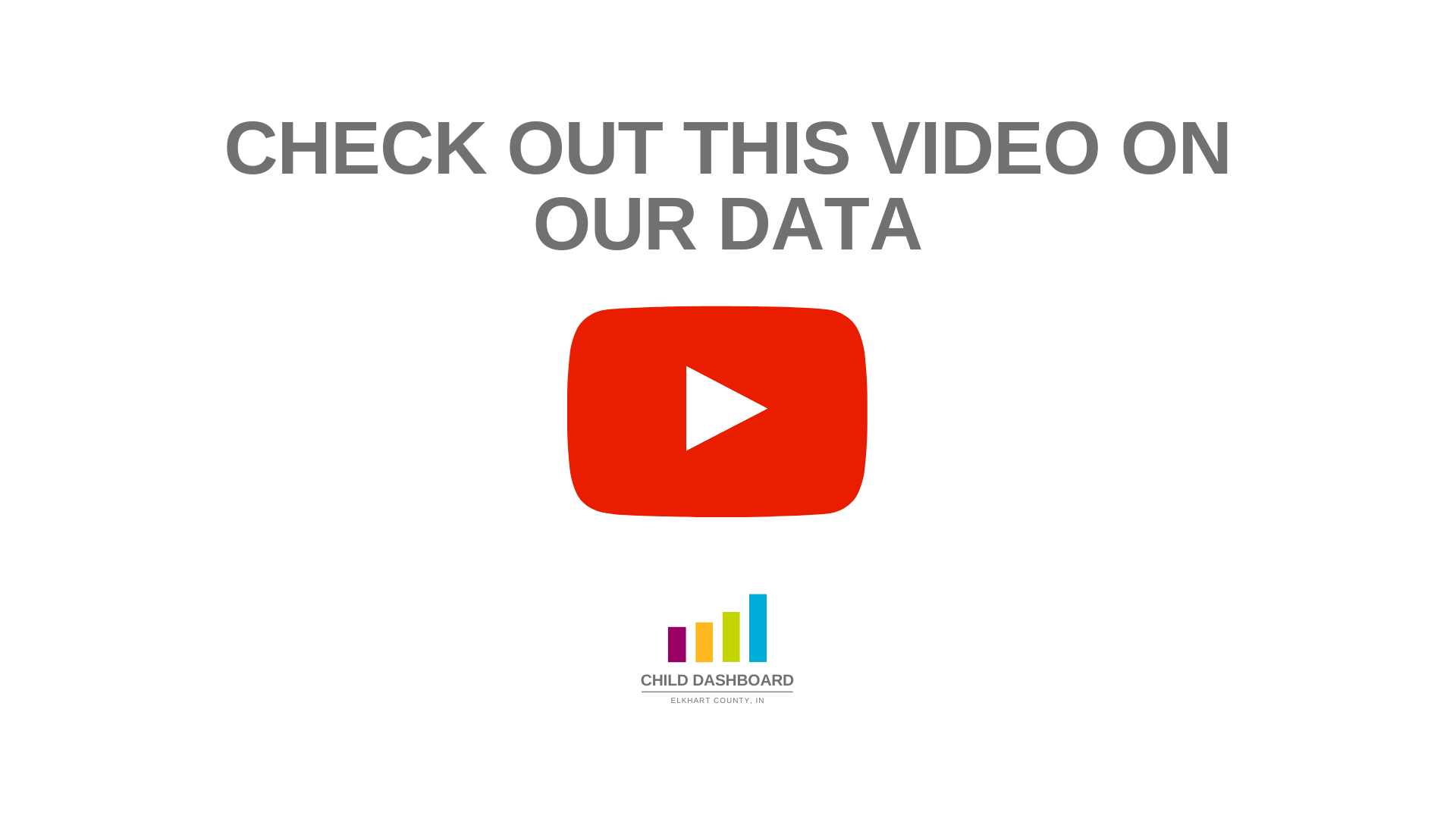
Dashboard Data
The Child Dashboard is a collaborative community dashboard that tracks publicly available and internal local datapoints that can serve as indicators for child wellbeing and safety in Elkhart County.
Indicators
A dashboard indicator is a data point that provides quantitative information that can tell us something about child wellbeing and safety in the county. No single data point is perfect or tells the full story, but by looking at data points from across many organizations and sectors, we hope to be able to see the most important trends in child wellbeing and safety in our county and be able to respond nimbly and proactively as a community to make a difference.
Dashboard indicators must meet the following three criteria:
Can inform and drive action
Sourced from a trusted sharer/representative
Value of the indicator to the community is worth the effort required to obtain the data
Data Providers
You will see two types of indicators on the dashboard: publicly available data (such as unemployment rate) and local partner data that comes from an Elkhart County organization that is willing to regularly share a specific data point.
Partners providing local data are selected with the following criteria in mind:
Are in some way representative of the sector (i.e., YWCA is well placed to share a data point connected to incidences of domestic violence and care seeking for domestic violence
Have a good reputation and are respected by peer and partner organizations
Have given input in an iterative process to determine what data they might provide that would meet the indicator criteria
Dashboard Organization
The child dashboard looks at indicators for child wellbeing through two lenses: risk factors and protective factors. Each of these lenses has its own dashboard—one focused on risk indicators and one focused on protective indicators. Each dashboard contains four columns each representing a different step on the pathway from upstream warning signs and social determinants all the way through to direct outcomes that we are either trying to avoid or encourage.
The goal of organizing data indicators this way is to allow the dashboard user to visualize a progressive logical relationship between groups of data points, both negative, signs of risks and positive, protective factors. When we see a whole group of indicators trending in the same way, it can send a strong message about what is happening in the lives of families in our community. We hope that this logical progression allows dashboard users to see opportunities for interventions and collective community action at each step in order to avoid further escalation of problematic trends and/or to encourage more protective activities.
What The Colors Mean
Data Updates
The dashboard uses a three-color system to give dashboard viewers a sense of whether the indicator is trending in a desirable or undesirable direction.
Green: trend is moving in a desirable direction compared to the prior period
Grey: neutral, no significant change or non-categorizable
Red: trend is moving in an undesirable direction compared to the prior period
The child dashboard will officially launch in September 2021 and will be updated with available data every quarter. These quarterly updates will be sent to collaborating partners and discussed in quarterly in-person collaboration meetings. If you have ideas for additions, changes or stories connected to the dashboard data, The SOURCE is managing the dashboard and can be reached at thesource@oaklawn.org. You can also contact us by visiting our contact page!


